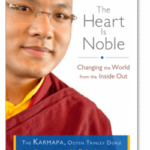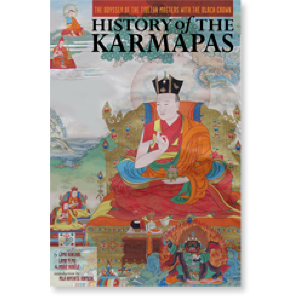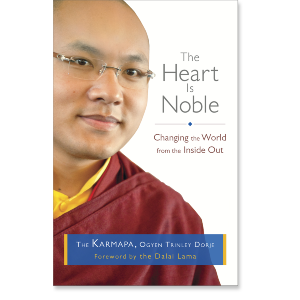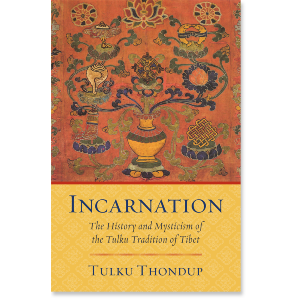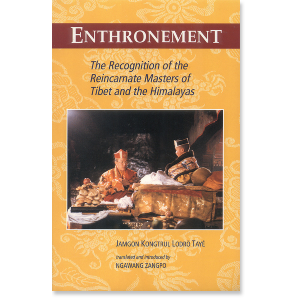The following is an account of the discovery and recognition of the Seventeenth Karmapa Ogyen Trinley Dorje, excerpted from The History of the Karmapas: The Odyssey of the Tibetan Masters with the Black Crown
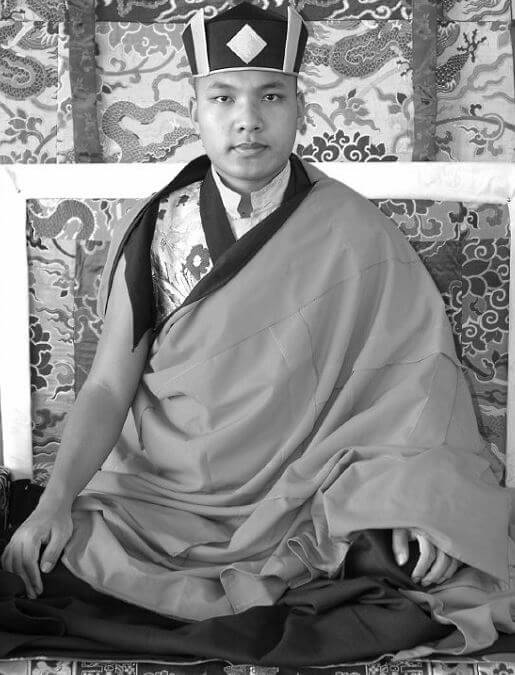
The Last Testament
Most of his previous reincarnations left behind a Last Testament giving indications of their rebirth. But in 1981, when the sixteenth Karmapa died, no one was able to find a Last Testament. For nine long years everyone searched, hoping for a sign that would allow a successor to be found. The twelfth Tai Situpa , one of the closest disciples of the sixteenth Karmapa, recounts how, unbeknownst to him, his master had given him the Last Testament shortly before his death while they were together in Calcutta:
During this time, he gave me a lot of advice and told stories from the past. Every evening we talked after dinner. Then once, after I had off ered him the fresh orange juice he liked, and not long before we went to bed, he gave me the protection amulet, saying, "This is a very important protection. " He did not say, "Open it in the future, " or, "You will need it. " He simply added, "It will be very benefi cial for you. " I thought it was just a protection amulet. Usually, Tibetan lamas create these out of a piece of paper that has a printed or drawn mandala of a particular deity. It is folded in a special way to make a square shape, wrapped in colored strings, and enclosed in cloth or leather. This one was enclosed in yellow brocade and I used to wear it around my neck on a gold chain.
The Tai Situpa wore the amulet until the end of 1990 when, on retreat, he had a sudden inspiration to open it. Inside he found an envelope with the sixteenth Karmapa's writing: "To be opened in the Iron Horse year, " which related precisely to the year the Tai Situpa decided to look inside the precious amulet! The letter said:
Oh Marvel! Self-realization is continual bliss.
The dharmadhatu has neither center nor periphery.
To the north of here, in the east [of the Land] of Snow [1],
Lies the country where Divine thunder spontaneously blazes [2].
In a beautiful place of nomads [marked] by the sign of "that
which fulfills all desires " [3],
The method is Döndrup and the wisdom is Lolaga [4].
[Born] the year of the one used for the earth [5]
With the miraculous and far-reaching sound of the white one [6],
He is the one known as the Karmapa.
Sustained by the lord Dönyö Drubpa [7],
Impartial, he fathoms all directions.
Neither close to some, nor distant from others, he is the protector of all beings:
The sun of the Buddha's Dharma that benefi ts others blazes continually.
The numbered lines can be interpreted as follows:
1. Ogyen Trinley Dorje was born in Kham, a region of Eastern Tibet.
2. The Last Testament uses the term "Nam Chak, " "Heavenly Iron "; the place of birth of the Karmapa is called "Lhathok, " "Divine Thunder. "
3. "That which fulfi lls all desires " refers to the "cow that fulfills all desires, " a term found in Buddhist texts; the name of the nomadic community where the child was born is "Bagor, " and "Ba " means "cow. "
4. Here, the sixteenth Karmapa indicates very clearly the names of his future parents. In Buddhist texts, method and wisdom refer to the masculine and feminine principles, respectively.
5. The ox is habitually used to work the land: the year of the birth of the Karmapa was that of the Wood Ox.
6. This refers to the sound of the conch that, soon after the birth of the Karmapa, resounded miraculously in the sky.
7. Dönyö Drubpa (Skt. Amoghasiddhi) is one of the five dhyanibuddhas, who represents the family of activity, karma. Dönyö refers to the twelfth Tai Situpa, whose name is Pema Dönyö
Nyinje, indicating that he will become the root lama of the seventeenth Karmapa.
In 1992, the twelfth Tai Situpa and the twelfth Gyaltsabpa , another principal disciple of the sixteenth Karmapa, sent a copy of the Last Testament to Drupön Dechen Rinpoche , abbot of Tsurphu Monastery, seat of the Karmapas in central Tibet, inviting him to organize a delegation to locate the seventeenth Karmapa. In May, emissaries from Tsurphu excitedly set out for Kham in search of the Karmapa. On May 18, they arrived in view of Karlek monastery. Stating that they came from Tsurphu, they asked for directions to the Bagor region in order to visit Loga, a family member. They met Yeshe Rabsel , Apo Gaga's elder brother, who told them where the family resided. The visitors announced that they were searching for a tulku.
Yeshe Rabsel quickly joined his parents to announce that a delegation from Tsurphu was searching for a tulku, probably related to his young brother. This news made the young child leap up and start dancing happily. Very early the same morning, before his brother's arrival, he had prepared a small pack bundle that he had placed on the back of his goat, telling his mother that he was going to fi nd his monastery. He had then pointed toward the west to indicate where it was.
His parents immediately prepared the tent to welcome the travelers in a dignifi ed manner. Some days later, when the delegation approached the camp, they were received with honor. When the emissaries questioned the parents about the date and the circumstances of Apo Gaga's birth, they recounted the surprising signs: Loga's dreams, the sound of the conches, the cuckoo's song, the halo around the sun, and so forth. The monks then had confi rmation of the information they had already gathered. All the indications in the Last Testament proved to be perfectly correct.
One of the members of the emissary group, Lama Domo , the principal delegate of Tsurphu Monastery, then showed the parents the copy of the sixteenth Karmapa's Last Testament. As the father read it, the cuckoo's song was heard again. The visitors off ered long scarves of good omen to the family to mark the event before leaving for Tsurphu to announce the news and prepare for the offi cial arrival of the Karmapa.
The news spread quickly, to India and to the entire world. The fourteenth Dalai Lama revealed that he had had a signifi cant dream concerning the new incarnation: "I had a kind of dream of the location, the area where the present reincarnation was born. There were stones and meadows. It looked like a high altitude and faced south with beautiful streams. This is the main picture. Then someone, some source without form, was telling me, This is the place where the Karmapa is born'. "
The other two lineage holders-Sakya Trizin of the Sakya and Minling Trichen of the Nyingma-as well as many other masters confirmed the choice and offered prayers for the child's long life. The Dalai Lama officially recognized the child as the seventeenth Karmapa.
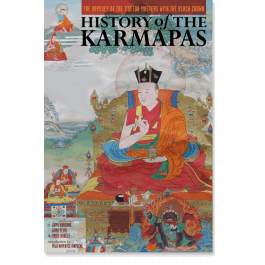
by Lama Kunsang, Lama Pemo, Marie Aubele

